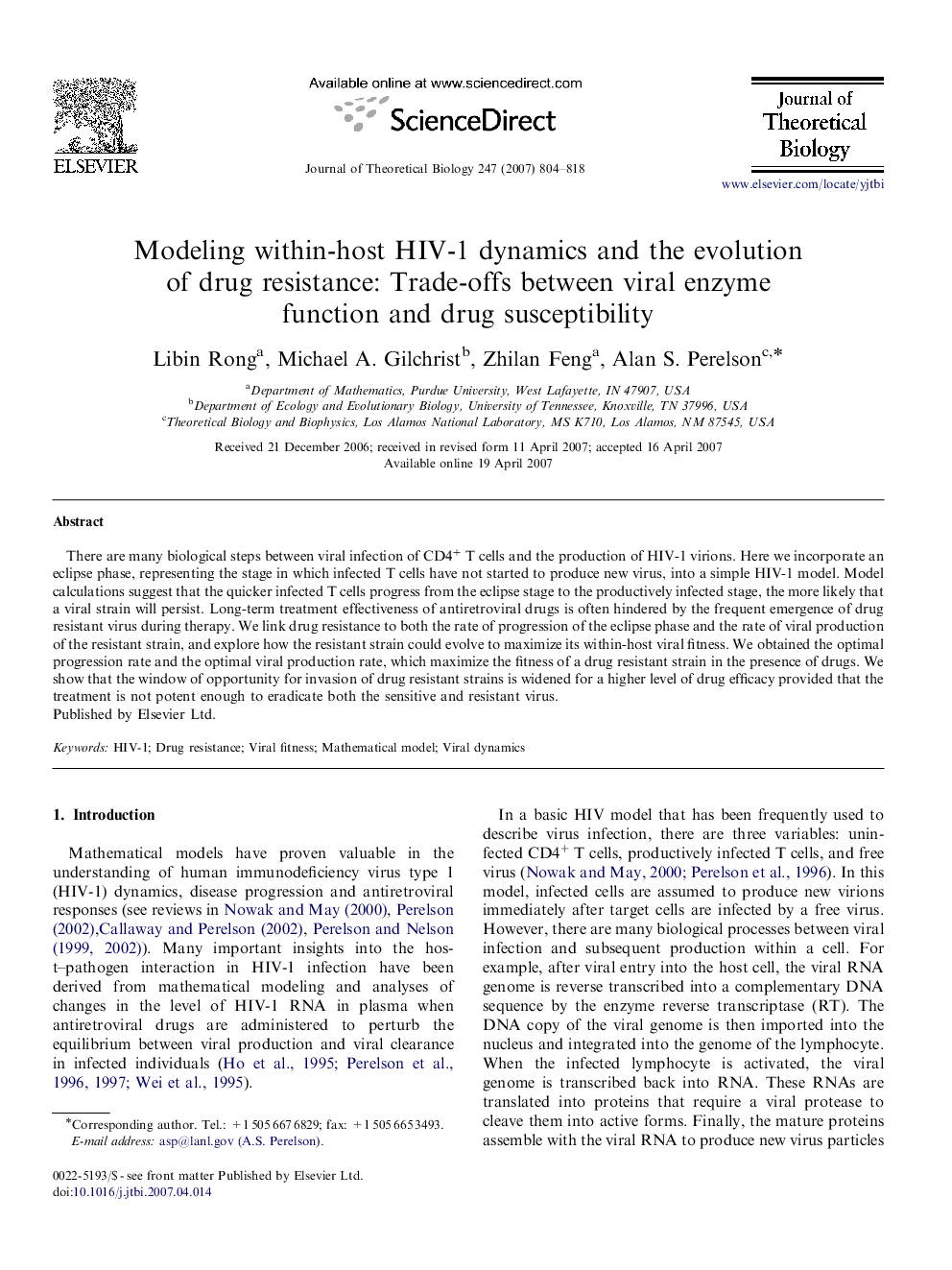| Article ID | Journal | Published Year | Pages | File Type |
|---|---|---|---|---|
| 4498903 | Journal of Theoretical Biology | 2007 | 15 Pages |
There are many biological steps between viral infection of CD4+CD4+ T cells and the production of HIV-1 virions. Here we incorporate an eclipse phase, representing the stage in which infected T cells have not started to produce new virus, into a simple HIV-1 model. Model calculations suggest that the quicker infected T cells progress from the eclipse stage to the productively infected stage, the more likely that a viral strain will persist. Long-term treatment effectiveness of antiretroviral drugs is often hindered by the frequent emergence of drug resistant virus during therapy. We link drug resistance to both the rate of progression of the eclipse phase and the rate of viral production of the resistant strain, and explore how the resistant strain could evolve to maximize its within-host viral fitness. We obtained the optimal progression rate and the optimal viral production rate, which maximize the fitness of a drug resistant strain in the presence of drugs. We show that the window of opportunity for invasion of drug resistant strains is widened for a higher level of drug efficacy provided that the treatment is not potent enough to eradicate both the sensitive and resistant virus.
